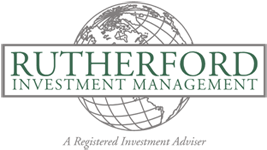Published December 15th, 2015

Yellen, expressing confidence in the U.S. economy, on Dec. 2nd gave the strongest indication yet that increases are on the way. She also cited falling unemployment and a small pickup in inflation; those markers support a rate hike.
The Fed has said that data will drive rate increase decisions, but the data has worked against it. Now, at the end of a long cycle, with growth slowing globally and at home, the Fed may be running out of time to increase rates. If the economy slows, as expected in 2016 and 2017, the Fed would have no justification to raise rates, and no dry powder necessary to boost a flagging economy. After repeatedly hinting at rate increases only to back off, and after the strongest statements yet about an increase, the Fed has painted itself into a corner. It must increase rates or face a loss of credibility. Of course, if it raises rates and the economy stutters or tanks, it will have lost credibility too. Is it just seeing what it wants to see in the data?
Yellen sees continued improvement in the labor market, which she believes will cause inflation to rise to more than the target rate of 2 percent over the medium term. However, in October, more than 2 million people who are out of the labor force indicated that they had not searched for work, even though they wanted jobs. These people could be drawn into the market if employment picks up, and drive up the unemployment rate.
Yellen further said she thought that delaying a rate increase could have adverse consequences for the economy. She even said that the rate increase will be a sign that the economy is improving, without offering proof. She opined that the day we raise rates is the day that we have been looking forward to. Her statement begs the question of whether it is the day that rates should rise.
The chairwoman also took pains to underscore that rate increases will be gradual. Lower and longer seems to be the mantra. She said that the “neutral” federal funds rate, the one that is compatible with steady inflation and low unemployment, was about 3.5 percent. She expects rates to rise gradually to that number.
Fed futures are now pricing near 80 percent probability of a quarter-point rate increase at the meeting Dec. 15-16. With the likelihood that the Fed will raise rates, the dollar strengthened against foreign currencies, as it has all year. The strength of the dollar, and other causes, has kept oil prices low and reduced exports. The manufacturing economy is in recession right now. U.S. factory activity in November fell to its lowest level since the end of the recession. The Institute of Supply Management said that its gauge of manufacturing activity fell to 48.6 percent from 50.1 percent in October, slipping into contraction territory for the first time since the end of 2012. The index has fallen for the past five months. Low oil prices have buoyed consumer spending, while at the same time undercutting capital expenditures.
Commodity prices have plunged, with oil, gold and copper showing steep drops. Copper, often called Dr. Copper, is considered a leading indicator of economic activity. Massive layoffs have occurred in the energy and mining spaces. Industrials and financials are bracing for layoffs. Is this really a time to increase rates? Apparently the Fed is still divided on this issue.
The strong dollar has reduced export sales, with American exporters finding sales undercut. Importers are finding it cheaper to buy products in Europe rather than the U.S. Import buyers have found, for instance, that foreign autos are now cheaper and attractive.
The ISM services index fell below expectations for November. Consumer confidence also plunged in November. The Federal Beige Book, a regional survey of closely watched economic conditions, ending Nov. 20, seemed generally to support the Yellen position; however, it reflected somewhat slower growth in Boston and New York.
We anticipate that the Fed will raise rates on Dec. 16th. The move has been well telegraphed to the market, which should absorb the increase without too much turmoil, because the equity market has already been under pressure since the Fed speakers started changing their tone.
The Dow is now in negative territory for the year. We expect it to end the year only slightly positive. We expect further slowing in the economy in 2016 with a concomitant underwhelming market. The interest rate increase might be short-lived. Remain defensive with a well-diversified portfolio.
William Rutherford is the founder and portfolio manager of Portland-based Rutherford Investment Management. Contact him at 888-755-6546 or wrutherford@rutherfordinvestment.com. Information herein is from sources believed to be reliable, but accuracy and completeness cannot be guaranteed. Investment involves risk and may result in losses.
